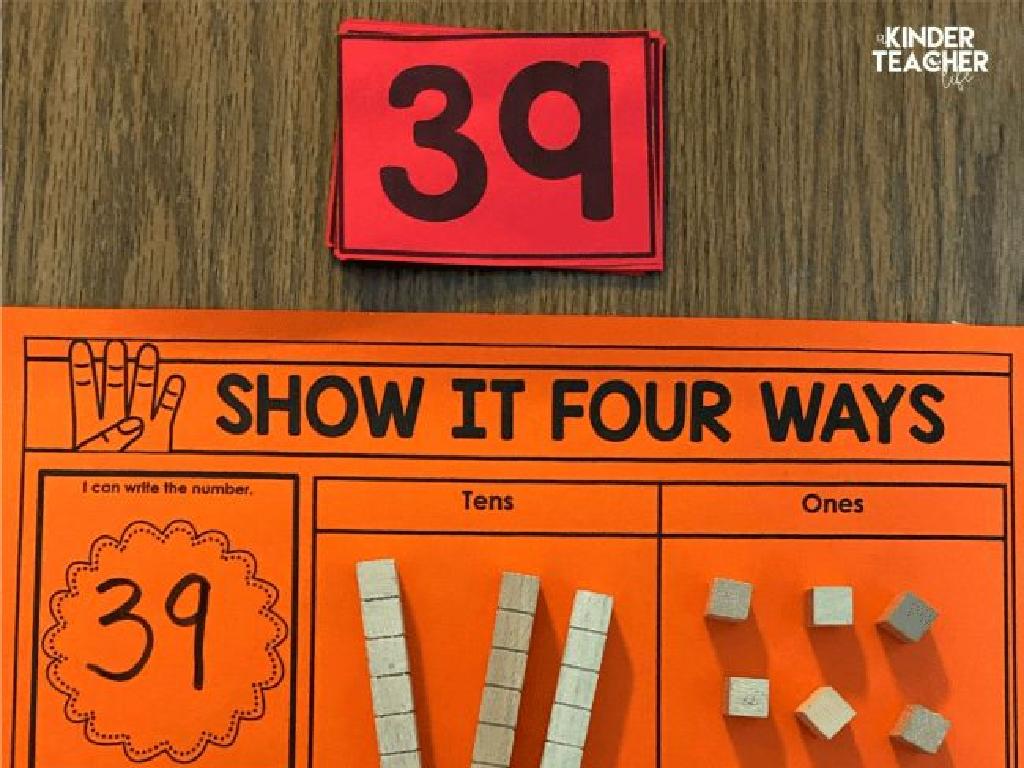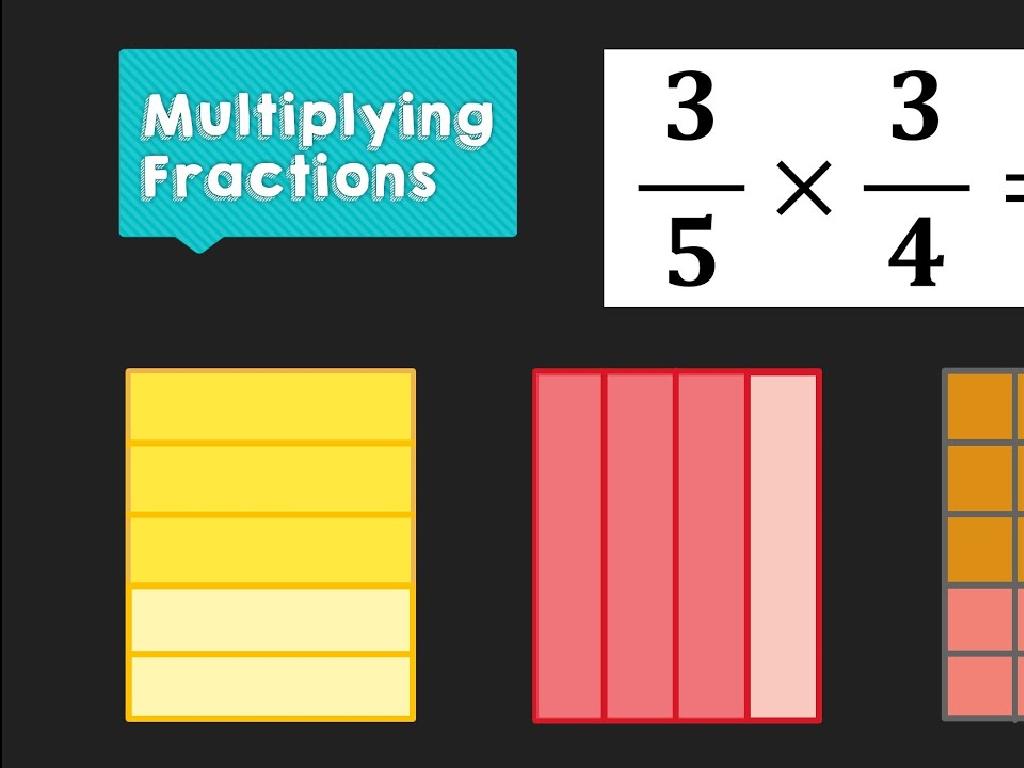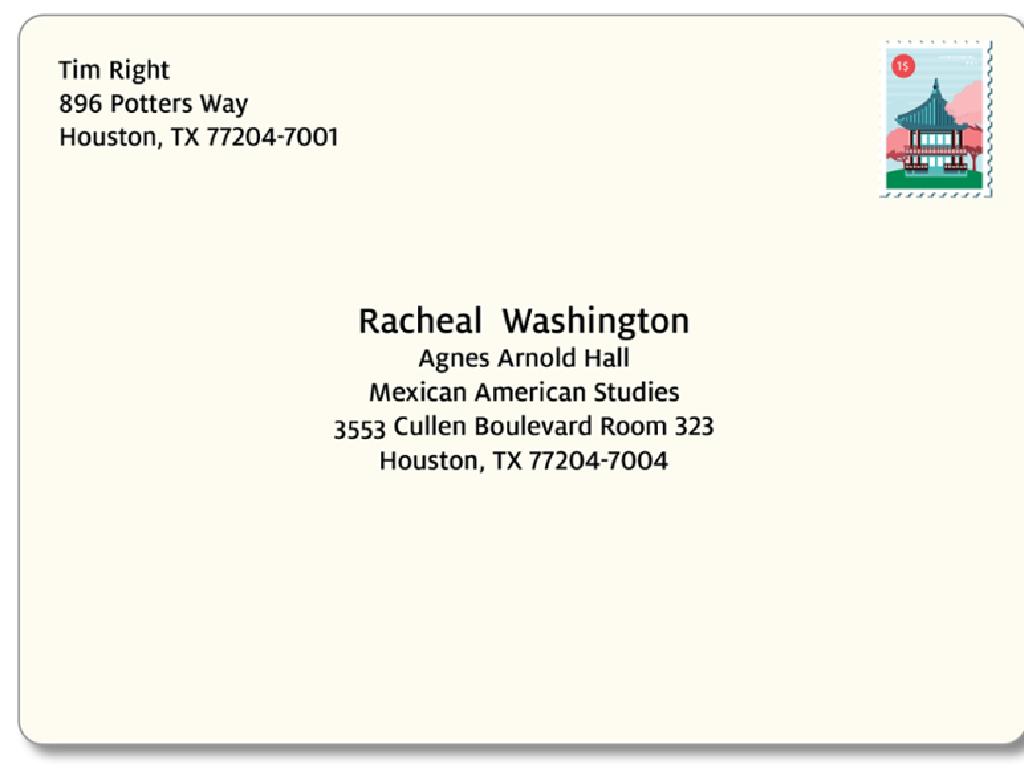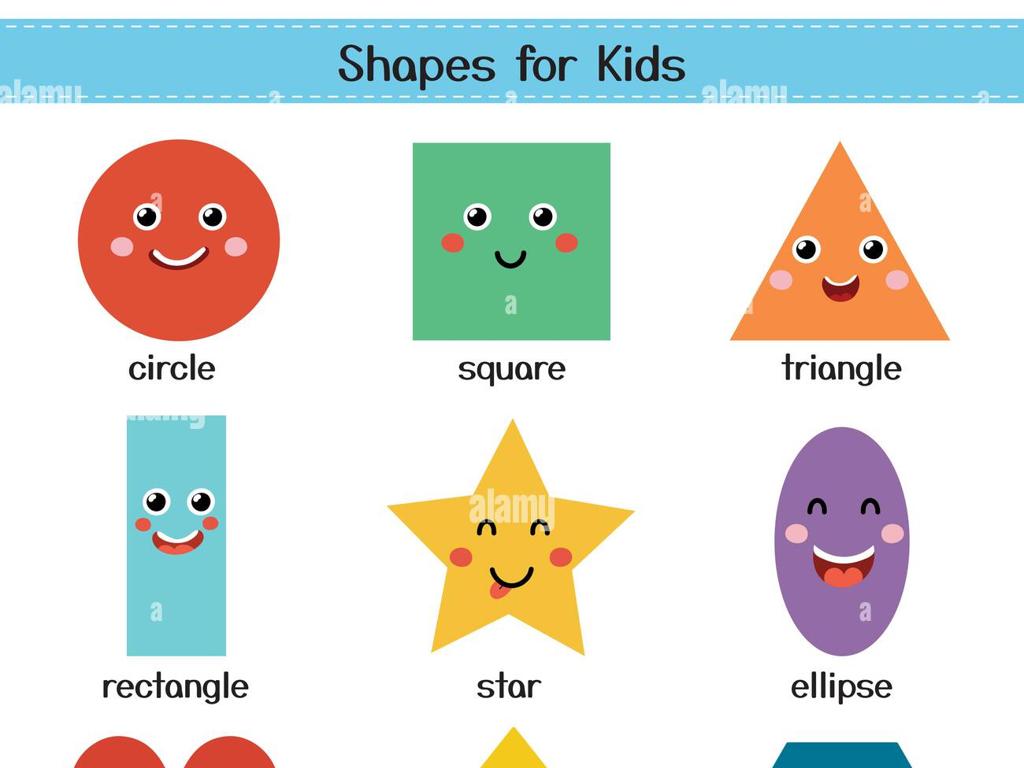Label Earth Features At Tectonic Plate Boundaries
Subject: Science
Grade: Eighth grade
Topic: Earth'S Features
Please LOG IN to download the presentation. Access is available to registered users only.
View More Content
Earth’s Features at Tectonic Plate Boundaries
– Earth’s dynamic landscape
– Our planet’s surface is constantly changing due to plate movements.
– Tectonic plates and boundaries
– Earth’s crust is divided into large plates that float on the mantle.
– Types of plate boundaries
– Convergent, divergent, and transform are the three main types.
– Features formed at boundaries
– Mountains, volcanoes, and earthquakes are examples of such features.
|
This slide introduces students to the concept of Earth’s features as a result of tectonic plate movements. Begin by explaining how the Earth’s surface is dynamic and constantly changing. Discuss the Earth’s crust and how it is divided into tectonic plates that float on the semi-fluid mantle beneath. Highlight the three main types of plate boundaries: convergent (where plates collide), divergent (where plates move apart), and transform (where plates slide past each other). Emphasize the features that are formed at these boundaries, such as mountains at convergent boundaries, rift valleys at divergent boundaries, and faults at transform boundaries. Encourage students to think about how these features impact the Earth’s landscape and human life.
Understanding Tectonic Plates
– Define tectonic plates
– Large pieces of Earth’s crust that fit together like a puzzle
– Earth’s layers: Lithosphere & Asthenosphere
– Lithosphere: rigid outer layer. Asthenosphere: under lithosphere, semi-fluid
– Movement of tectonic plates
– Plates float on the asthenosphere, moving due to currents
– Reasons behind plate movements
– Heat from Earth’s core creates convection currents causing plates to move
|
This slide introduces the concept of tectonic plates, which are massive slabs of the Earth’s crust and upper mantle, collectively known as the lithosphere. These plates rest upon the semi-fluid asthenosphere, which allows them to move. The movement is driven by convection currents in the mantle, caused by the heat emanating from the Earth’s core. Understanding the structure and movement of tectonic plates is crucial for comprehending the formation of Earth’s features at plate boundaries, such as mountains, volcanoes, and earthquakes. Encourage students to visualize the plates as giant rafts floating on the mantle, constantly moving and interacting with each other.
Tectonic Plate Boundaries and Earth’s Features
– Convergent Boundary Interaction
– Plates push towards each other, forming mountains or volcanoes
– Divergent Boundary Movement
– Plates drift apart, creating new crust and rift valleys
– Transform Boundary Dynamics
– Plates grind sideways, leading to earthquakes
– Impact on Earth’s Landscape
|
This slide introduces students to the concept of tectonic plate boundaries and their role in shaping Earth’s landscape. Convergent boundaries occur where plates move towards each other, often resulting in the formation of mountains, such as the Himalayas, or volcanic activity as seen in the Pacific Ring of Fire. Divergent boundaries are where plates move apart from one another, which can lead to the creation of new crust and features like the Mid-Atlantic Ridge. Transform boundaries occur where plates slide past each other horizontally, causing earthquakes; the San Andreas Fault is a prime example. Understanding these boundaries helps explain the distribution of various geological features and the occurrence of seismic activity around the globe. Encourage students to think of real-world examples of each type of boundary and the features they create.
Features at Convergent Boundaries
– Mountains from colliding plates
Plates push together, forcing the land upwards.
– Volcanic arcs and trenches
Subduction leads to volcanoes and deep oceanic trenches.
– The Himalayas: A case study
Result of the Indian and Eurasian plates colliding.
– The Andes: South American example
Formed by the subduction of the Nazca plate beneath the South American plate.
|
This slide explores the geological features formed at convergent tectonic plate boundaries, where two plates move towards each other. When these plates collide, the immense pressure can push the Earth’s crust upwards to form mountain ranges, such as the Himalayas, created by the collision of the Indian and Eurasian plates. Additionally, one plate may be forced under another in a process called subduction, resulting in volcanic activity and the formation of trenches. The Andes mountains are an example of this, where the subduction of the Nazca plate under the South American plate has created a long volcanic arc. Students should understand the immense natural forces at work and the timescales over which these features form. Encourage them to research more examples and the impact of these features on human life and the environment.
Features at Divergent Boundaries
– Mid-Ocean Ridges explained
– Underwater mountain ranges formed by plate separation
– Rift Valleys and their formation
– Lowland areas formed as land is pulled apart
– Understanding Fissure Volcanism
– Volcanic activity through cracks in the Earth’s surface
– Examining real-world examples
– The Mid-Atlantic Ridge and The Great Rift Valley
|
This slide introduces students to the geological features formed at divergent tectonic plate boundaries. Mid-Ocean Ridges, such as the Mid-Atlantic Ridge, are underwater mountain ranges created by the upwelling of magma as tectonic plates move apart, leading to sea-floor spreading. Rift Valleys, like The Great Rift Valley, are formed on land by the divergence of tectonic plates that create a lowland region. Fissure Volcanism occurs when magma rises through the large cracks or fissures due to the pulling apart of the crust, leading to volcanic activity. Students should understand that these features are dynamic and continuously shaped by the movement of the Earth’s lithospheric plates. Encourage students to research these real-world examples to gain a deeper understanding of the concepts discussed.
Features at Transform Boundaries
– Fault Lines and Earthquakes
– Earth’s crust cracks, leading to earthquakes
– Landscape Features: Offset
– Streams and roads that shift along the fault
– The San Andreas Fault
– A well-known example in California
|
This slide focuses on the geographical and geological features that are present at transform boundaries, where tectonic plates slide past one another. Students should understand that fault lines are the locations where the Earth’s crust has fractured and that significant movement along these fractures can result in earthquakes. They should also be able to identify landscape features such as offset streams and roads, which are visibly displaced by the movement of tectonic plates. The San Andreas Fault is a prime example of a transform boundary that can be studied to understand the real-world implications of these geological processes. Encourage students to explore how these features affect the environment and human structures.
Understanding Earthquakes at Tectonic Boundaries
– Causes of earthquakes
– Earthquakes occur due to tectonic plates shifting at boundaries.
– Measuring and predicting quakes
– Seismographs measure quakes; scientists analyze patterns to predict them.
– Earthquake safety measures
– Drop, cover, and hold on; prepare an emergency kit; know evacuation routes.
|
This slide aims to educate students on the fundamentals of earthquakes, particularly their causes, measurement, and prediction, as well as safety measures to take during such events. Begin by explaining that earthquakes are usually caused by the movement of tectonic plates at their boundaries, releasing energy that shakes the Earth. Introduce the tools used to measure earthquakes, such as seismographs, and discuss how scientists study seismic activity to predict potential earthquakes. Emphasize the importance of being prepared and knowing what to do during an earthquake, including practical safety tips. Engage students by discussing recent earthquakes and how preparedness may have impacted the outcomes. This will help students understand the relevance of the topic to real-world scenarios.
Class Activity: Tectonic Plate Boundaries
– Label features on your map
– Use clues to identify boundary types
– Clues include patterns of earthquakes, volcanoes, mountain ranges
– Discuss findings with a partner
– Share insights and reasoning behind your choices
– Compare maps with classmates
– Observe variations and learn from different interpretations
|
In this interactive class activity, students will apply their knowledge of Earth’s tectonic plate boundaries to label features on a map. Provide maps with outlines of tectonic plates and various geological features without labels. Students should use contextual clues such as the location of earthquakes, volcanic activity, and mountain formations to infer the type of plate boundary. Encourage them to discuss their reasoning with a partner to deepen their understanding. Afterward, have students compare their labeled maps with others to see different perspectives and interpretations. This activity will help solidify their understanding of the relationship between plate movements and Earth’s features. Possible variations of the activity could include using digital maps, creating a 3D model, or researching real-world examples of each boundary type.
Review: Earth’s Features at Tectonic Plate Boundaries
– Recap of today’s learning
– Features at different boundaries
– Mountains at convergent, rift valleys at divergent
– Significance of tectonic plates
– Predicting earthquakes, volcanic activity
– Implications for Earth’s landscape
– Understanding plate movements shapes our planet
|
This slide aims to consolidate the day’s learning by reviewing the key concepts related to Earth’s features at tectonic plate boundaries. Start by summarizing the lesson, then discuss specific features such as mountains, volcanoes, and rift valleys, and where they are typically found in relation to plate boundaries. Emphasize the importance of understanding tectonic plates in predicting geological events and their overall impact on Earth’s topography. Encourage students to reflect on how this knowledge can be applied in real-world scenarios, such as earthquake preparedness and understanding the distribution of natural resources.
Homework: Tectonic Plate Impact Research
– Research a tectonic plate location
– Prepare a presentation on its features
– Include images or diagrams of the area
– Describe the effects of plate movement
– Discuss earthquakes, volcanoes, mountain formation
– Present your findings next class
|
This assignment is designed to help students apply their knowledge of tectonic plate boundaries by researching a specific location where the effects of plate movement are evident. Students should look for areas where earthquakes, volcanoes, or mountain formation are prominent due to the shifting of plates. Encourage them to use credible sources and to include visual aids in their presentation to enhance understanding. In the next class, students will have the opportunity to share their research, which will foster a deeper comprehension of the topic and improve their public speaking skills. Provide guidance on presentation structure and remind them to be prepared to answer questions from their peers.






